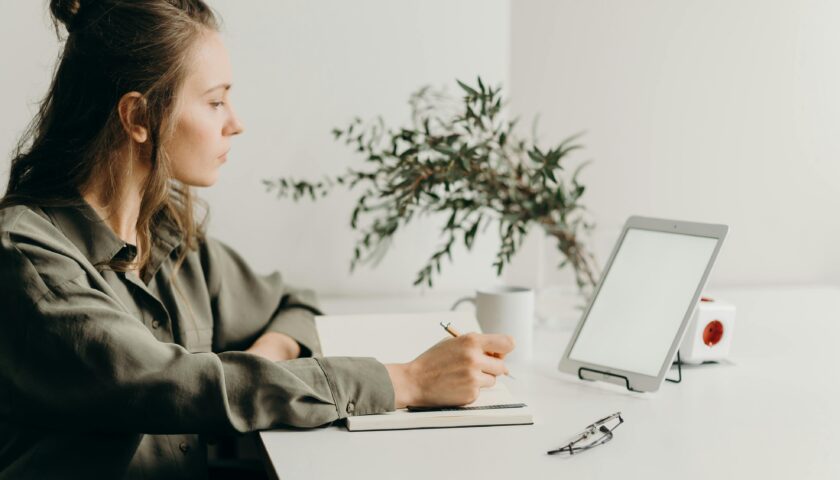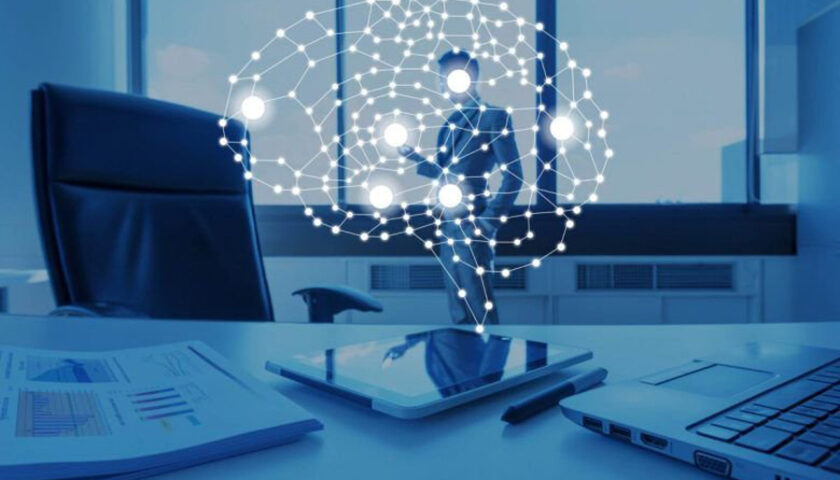Logo design, a crucial aspect of brand identity, is witnessing an exciting evolution in 2023. The rapidly changing landscape of business and design aesthetics has led to innovative trends that redefine how logos communicate a brand’s essence. Let’s delve into the top 9 logo design trends in 2023, paving the way for the future of brand representation.
IV. Bold Typography
Bold typography is making a statement in logo design. Strong, expressive fonts are becoming focal points, effectively communicating brand personality and values. The right choice of typeface can elevate a logo and make it memorable.
Incorporating bold typography in a logo design can convey confidence, modernity, and a bold brand identity. Brands are increasingly realizing the impact that words can have, not just in the message they convey but in how they are visually presented. Bold fonts can evoke emotions, align with the brand’s voice, and create a lasting impression.
A prime example of this trend is seen in tech and start-up companies. Bold, sans-serif fonts with clean lines are favored, projecting a sense of innovation and forward-thinking. Additionally, bold typography complements minimalist design, creating a harmonious and visually appealing logo.
The key to utilizing bold typography effectively lies in finding the right balance. It should be readable and reflect the brand’s personality. Each font has its unique character, and selecting the appropriate one is paramount.
V. Color Gradients
Color gradients have reemerged as a popular design choice in logos. Gradients add depth, dimension, and visual interest, giving logos a contemporary and vibrant look. When used thoughtfully, gradients can convey the brand’s energy and dynamism.
This trend is particularly appealing to brands targeting a youthful and modern audience. Gradients offer a wide array of possibilities, allowing designers to experiment with colors and create a visually striking effect. From subtle transitions to bold and contrasting hues, gradients can be tailored to match the brand’s identity and message.
Leading technology and lifestyle brands are embracing this trend, using gradients to infuse life and energy into their logos. The smooth transition from one color to another creates a sense of movement and fluidity, which resonates well in the digital landscape.
VI. Mixed Media and Textures
The trend of incorporating mixed media and textures into logos adds a tangible and unique dimension to brand representations. Combining digital and traditional art, alongside varied textures, lends a tactile quality to logos, making them stand out.
This trend celebrates creativity and diversity in design. It involves merging different artistic elements, such as watercolors, pencil sketches, or even photographs, into the logo. These diverse textures add depth and personality to the logo, creating a rich visual experience.
Brands aiming for an authentic, artisanal, or organic image are gravitating towards mixed media and textures in their logos. Whether it’s a vintage, handcrafted look or a modern, digital vibe, this trend offers ample creative opportunities.
When incorporating this trend, designers need to consider the brand’s essence and target audience. The textures should align with the brand’s story and values, enhancing its overall identity and making a lasting impression.
VII. Animated Logos
In the digital age, animation is becoming an integral part of logo design. Animated logos add interactivity and engagement, captivating the audience and leaving a lasting impression. These dynamic logos adapt to the online environment, enhancing brand visibility.
Animation in logos brings a new dimension of storytelling. It allows for movement, transformation, and evolution, making the brand come alive. Whether it’s a subtle, elegant animation or a bold, attention-grabbing sequence, the animation should resonate with the brand’s identity and message.
Tech-savvy brands, especially those in the gaming, entertainment, and technology sectors, are harnessing the power of animated logos. These logos are not only captivating but also memorable, leaving a strong imprint in the minds of the audience.
VIII. Hand-Drawn Logos
Hand-drawn logos offer a personalized touch, resonating with authenticity and human connection. Brands are opting for this trend to convey a sense of craftsmanship and approachability, differentiating themselves in a crowded market.
Hand-drawn logos emphasize the human element in design. They evoke emotions, tell a story, and reflect the unique identity of the brand. This trend is particularly attractive to businesses looking to establish a genuine and relatable connection with their audience.
Craft breweries, artisanal products, and lifestyle brands are embracing the hand-drawn logo trend to showcase their commitment to quality, creativity, and a personal touch. It gives a sense of being one of a kind, much like a bespoke piece of art.
IX. Negative Space Art
The clever use of negative space in logo design has gained prominence. It involves using the empty space around and within the design to create dual imagery or convey hidden meanings. This creative approach often captivates and intrigues viewers.
Negative space is the “hidden gem” of logo design. It’s the art of saying more with less. By utilizing the space around and within the main design, designers create a secondary image or message. This could be an optical illusion, a hidden symbol, or a clever representation of the brand’s values.
The appeal of negative space art lies in its ability to engage the audience. It encourages them to look deeper and discover the hidden elements, creating a memorable and impactful experience. Brands across various industries are leveraging this trend to add an element of intrigue and sophistication to their logos.
When employing this trend, designers need to strike a balance. The negative space should enhance the design without overpowering it or making it too complex for the audience to grasp.
X. Versatility and Adaptability
In the digital era, logos need to be versatile and adaptable across various platforms and devices. Responsive logos that maintain their integrity and impact regardless of size or medium ensure a consistent brand image and user experience.
Versatility and adaptability have become critical aspects of logo design. A logo should look equally appealing and recognizable on a billboard, a smartphone screen, or a social media profile picture. Responsive logos, designed to scale seamlessly, allow brands to maintain a strong visual presence across the digital landscape.
Brands are increasingly recognizing the significance of having a flexible logo that can adapt to different contexts. This flexibility ensures that the logo remains effective, no matter where it’s displayed, reinforcing brand recall and leaving a lasting impression.
XI. Conclusion
Logo design trends in 2023 are a testament to the ever-evolving design landscape and its symbiotic relationship with consumer preferences and technology. Embracing these trends allows brands to stay relevant, resonate with their audience, and make a lasting impression. From bold typography to animated logos, the future of logo design is exciting and promises a plethora of creative possibilities.
XII. FAQs
Q1. How do I choose the right logo trend for my brand?
- Consider your brand’s personality and target audience.
- Evaluate how well the trend aligns with your brand’s message and values.
Q2. Can I combine multiple logo design trends?
- Yes, blending trends can create a unique and eye-catching logo. However, ensure cohesion and balance.
Q3. Are these trends suitable for all industries?
- The mentioned trends can be adapted to various industries; however, tailor them to suit your brand’s identity and target market.





